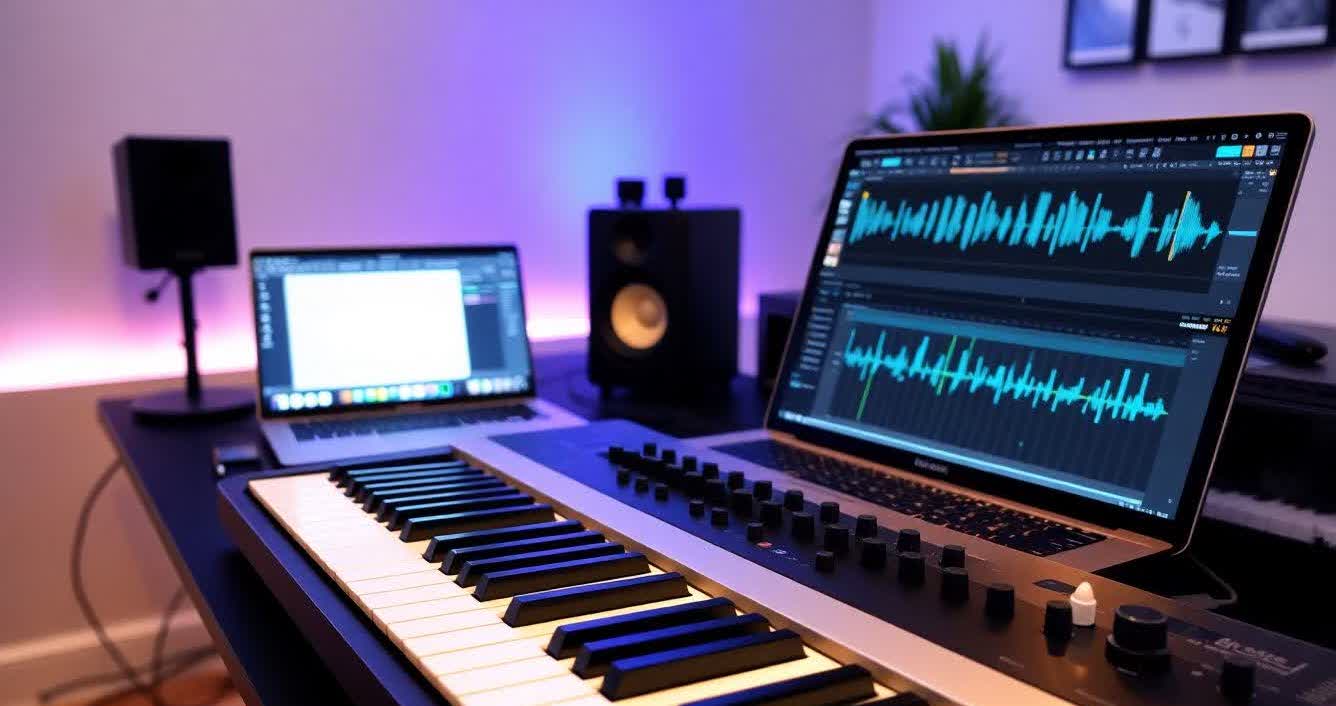June 19, 2025

In today’s digital-first music world, one term you’ll encounter constantly—whether you’re beat-making, scoring films, or experimenting with synth plugins—is MIDI. Yet for many newcomers, it can feel like a mysterious acronym.
Let’s clear things up.
MIDI, or Musical Instrument Digital Interface, is one of the most powerful tools in any music producer’s workflow. It's not audio, but performance data—a universal musical language that enables communication between your devices, software instruments, and hardware controllers.
Whether you’re playing on a MIDI keyboard, programming notes with your mouse, or syncing live hardware gear, understanding MIDI can completely transform your creativity and productivity in the studio.
MIDI was introduced in the early 1980s to allow musical devices to talk to each other. Unlike audio recordings, which store sound waveforms, MIDI stores data about musical performance: which note was played, when it was played, how long it lasted, how hard it was struck, and more.
You can think of MIDI as a digital sheet of instructions, rather than the performance itself.
For example:
This makes MIDI incredibly powerful because you can manipulate music endlessly without affecting the original performance.
Every major DAW (digital audio workstation) is built to work with MIDI because of its flexibility. With MIDI, you can:
Ready to start experimenting with MIDI right now? Try Our AI Music Generator for Free: Create Your First Track Now
Whether you're a beginner or seasoned pro, MIDI unlocks a new level of precision and creativity.
When you use MIDI in your setup, you’re working with a combination of hardware and software components:
MIDI files can also contain tempo changes, time signatures, control changes (like sustain pedal, expression, or vibrato), and program changes (to switch between instruments).
One of MIDI's best advantages? The files are tiny in size—perfect for saving, transferring, and collaborating across projects.
Want to start your MIDI journey with top-notch sounds? Start Your Free Trial with XYZ Platform – Download Commercial-Use Music Today
Here are just a few of the many ways musicians and producers use MIDI every day:
1. Beat-Making : Tap out drum rhythms using a MIDI pad controller. Each pad sends data to your sampler or drum VST, letting you program complex patterns with ease.
2. Film Scoring & Orchestration : Use orchestral sample libraries controlled via MIDI to sketch entire cinematic arrangements—without needing a full orchestra.
3. Live Performance & Stage Setups : Trigger backing tracks, light shows, and even video cues using MIDI clock sync—ensuring everything runs in perfect time.
4. Songwriting & Composing : MIDI lets you record melodic ideas quickly, transpose them into different keys, or harmonize them using plugins and chord tools.
Want polished tracks to practice with or build upon? Download Our Curated Pack of 100 Royalty-Free Tracks
Whether you’re composing for sync licensing, making YouTube beats, or crafting ambient soundscapes, the right resources can take your MIDI workflow to the next level.
Explore these:
MIDI isn’t just a tool—it’s the foundation of digital music production. Whether you’re working with software instruments, sequencing beats, or controlling synths on stage, understanding MIDI unlocks the full potential of your musical creativity.
Once you grasp the basics, you’ll never look at your DAW or keyboard the same way again. MIDI empowers you to edit smarter, compose faster, and produce with more intention—without limits.
Now’s the time to get hands-on: Create Your First Track with Our Free AI Music Generator
Master MIDI, and you'll be able to turn your musical ideas into full-fledged productions—flawlessly, flexibly, and fearlessly.
Stay up to date with the newest tips, gear reviews, and step-by-step guides to elevate your photography journey from home and beyond.